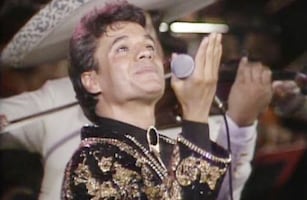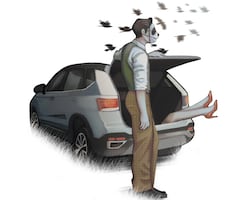The Sea of Cortez ’s origin dates back 11 million years;
*Sea of the East (Sea of Cortez) in the Kiliwa language. A chronicle of events and characters to help us understand and yearn for a sea
about 6 million years ago, it began to take its present form;
around 8–10 thousand years ago, indigenous people survived along the coast by fishing and hunting in its rich waters;
1000 years ago, it was home to important cultural and socioeconomic centers for native people ;
in 1539, Spanish explorer Francisco de Ulloa gave it its name, in honor of Spanish conquistador Hernán Cortés .
And then, in the 16th and 17th centuries:
the Pericúe , Guaycura , Cochimí , Seri , Yuma , Pima Altos , and Pápago peoples survived fishing, hunting and gathering along its coasts,
Spanish explorers and conquistadores such as Francisco de Ulloa, Hernán Cortés, Melchor Díaz, Sebastián Vizcaíno, Juan de Iturbi, Álvar Núñez Cabeza de Vaca, and Isidro de Atondo y Antillón, sailed its waters, subjugated its native peoples , introduced new and deadly infectious diseases, and drew the first maps of the region;
Jesuit, Franciscan, and Dominican missionaries such as Fathers Miguel del Barco González, Juan María de Salvatierra, Eusebio Francisco Kino, Juan de Ugarte, Luis Sales, Francisco María Piccolo, Clemente Guillen, Fernando Consag, and Junipero Serra, evangelized native peoples and built missions along the shores of the Sea of Cortez ;
British pirates and corsairs such as Francis Drake, Thomas Cavendish, and Woodes Roger ravaged its maritime trade;
in 1769, Jean-Baptiste Chappe d’Auteroche of the French Académie des Sciences carried out the first scientific expedition (recording the transit of Venus from a location near San José del Cabo, Baja California);
between 1846 and 1848, the First American Intervention in Mexico took place. As a result, the country lost more than 2 million square kilometers, including much of today’s states of California, New Mexico, Arizona, Nevada, Utah, and Colorado, in addition to Texas which had already been seized in 1836;
in 1847, Mexican Captain Manuel Pineda repelled the American invaders in Mulegé, Baja California;
in 1853, American adventurer William Walker (who in 1856 became president of Nicaragua) arrived in La Paz and declared the independence of the Republic of Baja California and Sonora, proclaiming himself its president;
in the 19th century, Captain Charles Melville Scammon and other whalers hunted gray whales in their calving lagoons along the coast of Baja California and inside the Sea of Cortez , driving them nearly to extinction;
in 1861, the governor of Baja California, Teodoro Riveroll, wrote to Mexican President Benito Juárez complaining about foreign whaling ships working in the region;
in 1877, 1881 and 1889, respectively, three Mexican Presidents, Plutarco Elías Calles, Adolfo de la Huerta y Abelardo L. Rodríguez, were born in the city of Guaymas, Sonora;
in 1924, Charles Chaplin and Lillita Louisa McMurray got married in Empalme, a suburb of Guaymas;
in the 1920’s, massive use of gillnets, one of the least selective and most destructive fishing methods, began in the Sea of Cortez . The nets decimated species that today, 100 years later, are threatened with extinction, such as the totoaba , vaquita porpoise , and several species of marine turtles ;
in the 1930’s, one of the most environmentally harmful fishing techniques ever developed, bottom trawling, began in the Sea of Cortez ;
in 1940, Ed Ricketts and John Steinbeck set sail onboard the Western Flyer, out of Monterey, California, to undertake the most memorable expedition ever made to the Sea of Cortez ;
in the 1960’s, the sardine fishery began, a key fish in the food chain for many other species of fish, birds, and marine mammals and an important source of employment; this fishery has collapsed several times, in 1992, 1998, 2004 and 2013;
in 1973, Richard Brusca published its landmark book, A Handbook to the Common Intertidal Invertebrates of the Gulf of California , then the most comprehensive study of its kind;
in the second half of the 20th century, historians, explorers, and scientists documented and studied the Sea of Cortez ’s enormous natural richness. Among them stand Pablo Martínez, Jacques Cousteau, Bernardo Villa, Richard Brusca, Lloyd Findley, Anelio Aguayo, Exequiel Ezcurra, and Saul Álvarez-Borrego;
in 2005, UNESCO inscribed the islands, islets, and coastal zones of the Sea of Cortez as a World Heritage Site ;
in 2009, UNESCO included the Sea of Cortez in its List of World Heritage in Danger ;
in 2020, in a tiny corner of Baja California, there survive just two speakers of Kiliwa and less than 20 of the endangered vaquita porpoise ; a language and a marine mammal, both endemic to Mexico , that we have not been able to protect and have condemned to extinction.
Twitter: @ovidalp
Noticias según tus intereses
[Publicidad]
[Publicidad]














